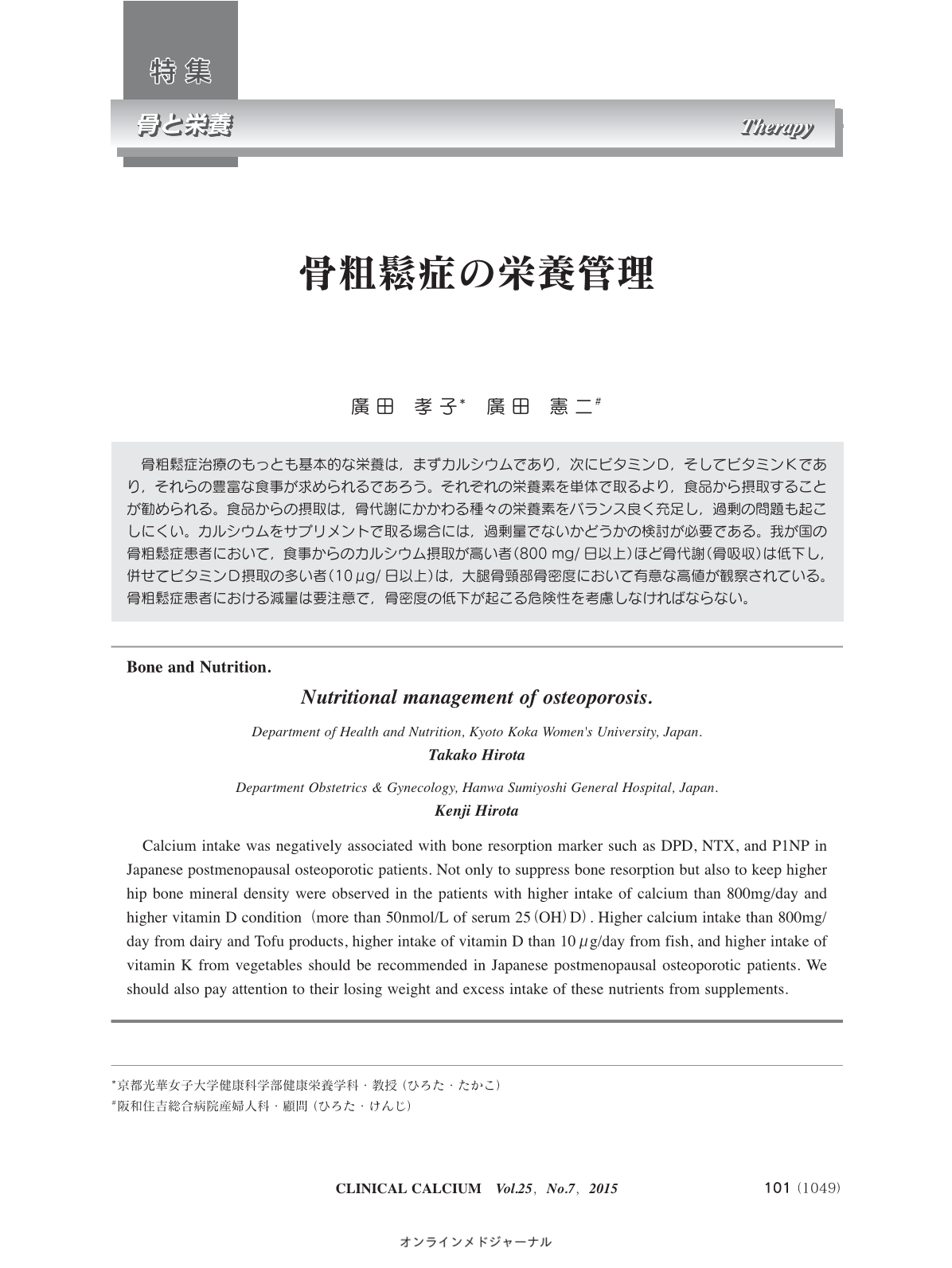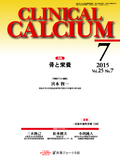Japanese
English
- 有料閲覧
- Abstract 文献概要
- 1ページ目 Look Inside
- 参考文献 Reference
骨粗鬆症治療のもっとも基本的な栄養は,まずカルシウムであり,次にビタミンD,そしてビタミンKであり,それらの豊富な食事が求められるであろう。それぞれの栄養素を単体で取るより,食品から摂取することが勧められる。食品からの摂取は,骨代謝にかかわる種々の栄養素をバランス良く充足し,過剰の問題も起こしにくい。カルシウムをサプリメントで取る場合には,過剰量でないかどうかの検討が必要である。我が国の骨粗鬆症患者において,食事からのカルシウム摂取が高い者(800 mg/日以上)ほど骨代謝(骨吸収)は低下し,併せてビタミンD摂取の多い者(10μg/日以上)は,大腿骨頸部骨密度において有意な高値が観察されている。骨粗鬆症患者における減量は要注意で,骨密度の低下が起こる危険性を考慮しなければならない。
Calcium intake was negatively associated with bone resorption marker such as DPD, NTX, and P1NP in Japanese postmenopausal osteoporotic patients. Not only to suppress bone resorption but also to keep higher hip bone mineral density were observed in the patients with higher intake of calcium than 800mg/day and higher vitamin D condition(more than 50nmol/L of serum 25(OH)D). Higher calcium intake than 800mg/day from dairy and Tofu products, higher intake of vitamin D than 10μg/day from fish, and higher intake of vitamin K from vegetables should be recommended in Japanese postmenopausal osteoporotic patients. We should also pay attention to their losing weight and excess intake of these nutrients from supplements.



